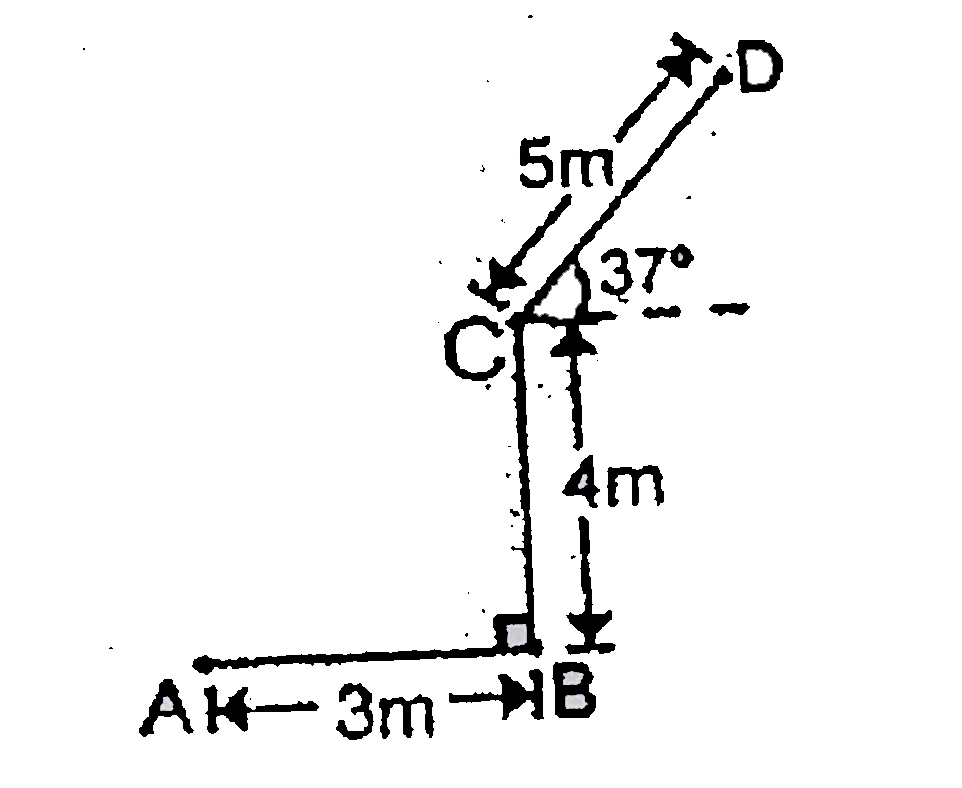In which of the following cases of motions, the distance moved and the magnitude of displacement are equal ?
If the car is moving on straight road
If the car is moving in circular path
The pendulum is moving to and fro
The earth is revolving around the sun
To determine in which case the distance moved and the magnitude of displacement are equal, we can analyze each option provided.
1. Understanding Distance and Displacement:
- Distance is the total length of the path traveled by an object.
- Displacement is the shortest straight line distance from the initial position to the final position, along with its direction.
2. Analyzing Each Option:
- Option 1: Car moving on a straight road:
- If a car moves from point A to point B in a straight line, the distance traveled is equal to the straight line distance from A to B, which is also the displacement.
- Therefore, in this case, distance = displacement.
- Conclusion: This option is correct.
- Option 2: Car moving on a circular path:
- If a car moves in a circle and returns to the starting point, the distance traveled is the circumference of the circle, while the displacement is zero (as the initial and final positions are the same).
- Therefore, distance ≠ displacement.
- Conclusion: This option is incorrect.
- Option 3: Pendulum moving to and fro:
- When a pendulum swings from point A to point B and back to A, the distance traveled is the total length of the swing, but the displacement is zero (initial and final positions are the same).
- Therefore, distance ≠ displacement.
- Conclusion: This option is incorrect.
- Option 4: Earth moving around the Sun:
- The Earth moves in an elliptical path around the Sun. Over one complete orbit, the distance traveled is significant, but the displacement (from the starting point back to the same point) is zero.
- Therefore, distance ≠ displacement.
- Conclusion: This option is incorrect.
3. Final Conclusion:
- The only case where the distance moved and the magnitude of displacement are equal is in Option 1, where the car is moving on a straight road.
- Distance is the total length of the path traveled by an object.
- Displacement is the shortest straight line distance from the initial position to the final position, along with its direction.
- Option 1: Car moving on a straight road:
- If a car moves from point A to point B in a straight line, the distance traveled is equal to the straight line distance from A to B, which is also the displacement.
- Therefore, in this case, distance = displacement.
- Conclusion: This option is correct.
- If a car moves in a circle and returns to the starting point, the distance traveled is the circumference of the circle, while the displacement is zero (as the initial and final positions are the same).
- Therefore, distance ≠ displacement.
- Conclusion: This option is incorrect.
- When a pendulum swings from point A to point B and back to A, the distance traveled is the total length of the swing, but the displacement is zero (initial and final positions are the same).
- Therefore, distance ≠ displacement.
- Conclusion: This option is incorrect.
- The Earth moves in an elliptical path around the Sun. Over one complete orbit, the distance traveled is significant, but the displacement (from the starting point back to the same point) is zero.
- Therefore, distance ≠ displacement.
- Conclusion: This option is incorrect.
- The only case where the distance moved and the magnitude of displacement are equal is in Option 1, where the car is moving on a straight road.
Topper's Solved these Questions
- MOTIONBook:NCERT EXEMPLAR ENGLISHChapter:MOTIONExercise:Short Answer Type Questions
Explore 7 Videos
- MOTIONBook:NCERT EXEMPLAR ENGLISHChapter:MOTIONExercise:Long Answer Type Questions
Explore 6 Videos
- GRAVITATIONBook:NCERT EXEMPLAR ENGLISHChapter:GRAVITATIONExercise:LONG ANSWER TYPE QUESTIONS
Explore 4 Videos
- SOUNDBook:NCERT EXEMPLAR ENGLISHChapter:SOUNDExercise:Long Answer Type Questions
Explore 3 Videos
Similar Questions
Knowledge Check
Which of the following relationships between the acceleration a and the displacement x of a particle executing simple harmonic motion?
Aa=2x2Ba=−2x2Ca=2xDa=−2x
Which of the following in case of a discrete data, is not equal to the median?
View SolutionFor a particle under going rectilinear motion with uniform acceleration, the magnitude of displacement is one third the distance covered in some time interval. The magnitude of final velocity is less than magnitude of initial velocity for this time interval. Then the ratio of initial speed velocity to the final speed for this time interval is :
View SolutionFor a particle under going rectilinear motion with uniform acceleration, the magnitude of displacement is one third the distance covered in some time interval. The magnitude of final velocity is less than magnitude of initial velocity for this time interval. Then the ratio of initial speed velocity to the final speed for this time interval is :
View SolutionDue to the motion of a charge, its magnitude
View SolutionA car travels from A to B and returns to its original position.
The distance between A and B is 2000 m.
When can the magnitude of distance and displacement be equal for a body in motion?
View SolutionA particle moves along a path ABCD as shown in the figure. Then the magnitude of net displacement of the particle from position A to D is:

View SolutionSTATEMENT - 1 : If person walks in a straight line and never changes direction, then the distance and the displacement will have exactly the same magnitude.
STATEMENT - 2 : The phrase ''20 m, northwest'' likely describe the distance for a motion.
STATEMENT - 3 : The phrase ''20 m, west'' likely describes the displacement for a motion
View Solution


